It’s been a few years since we’ve toasted the arrival of the Volkswagen Amarok, debuting way back in 2010. And 13 years later, a new one arrives.
Amarok hasn’t been a huge seller over that time, with 7730 sold locally, a number some ute nameplates sell in a year. But then it’s been pitched as a more ‘aspirational pick-up’, especially in its latter years, with a price tag to match.
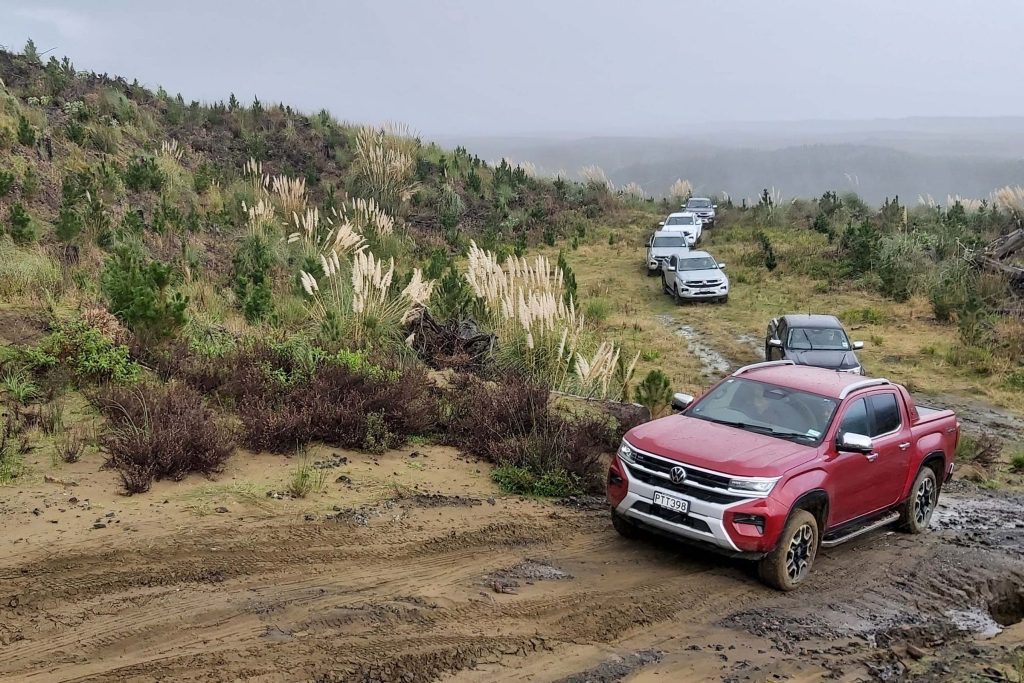
The new rig shares its hardware with the Ford Ranger, the first of several commercial vehicles the two companies will collaborate on. VW is keen to stress it did have input into the project to ensure the resulting truck had the right sort of Amarok DNA (a wide tray, rear discs, a V6). It has a distinct look and we’re told it shares only the mirrors, door handles and glass with the Ranger. And you really wouldn’t pick this as riding on the same platform as the Ford.
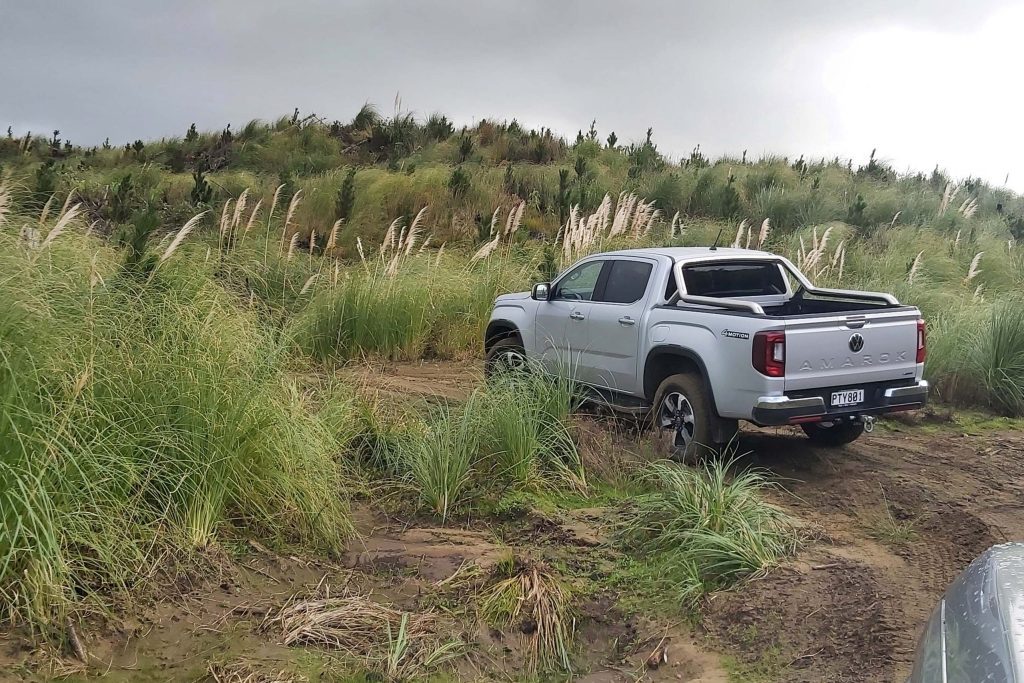
And neither do you suspect it inside the cabin, although there are more shared components here; the big portrait-orientated screen (although the interface and graphics are VW specific), the shifter, the novel door releases, and some of the switch gear. But the Amarok has its own dash design with its C-shaped vents and a smattering of unique buttons too. Other changes include the indicator stalk on the left, the stitched leather look dash, a VW specific steering wheel while the seats are stuffed with VW’s high density foam.
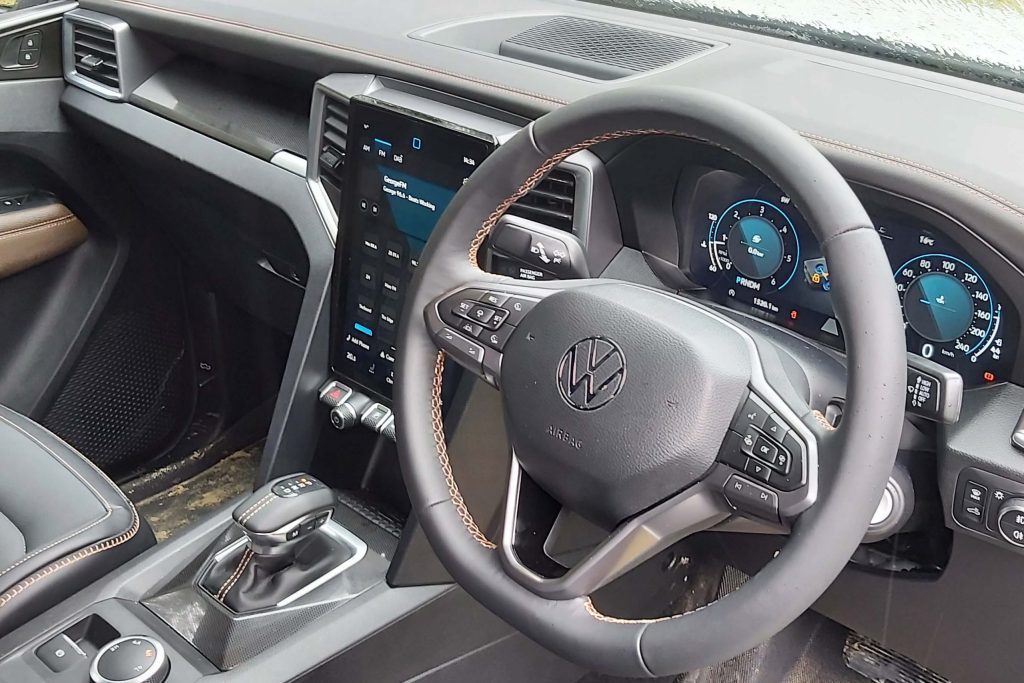
Along with a unique steering tune, the suspension has its own VW settings, and like the original, this Amarok has its rear leaf springs and dampers located outside the chassis rails, said to be key for a good mix of ride and handling.
The four model line up for New Zealand starts with the Life at $65,000. That gets the single-turbo four cylinder with 125kW and 405Nm, mated to a six-speed trans. It’s rated at 9.2L/100km and 242g/km with a fee of $3220 (though from July 1 it will be stung with a fee of $5290).
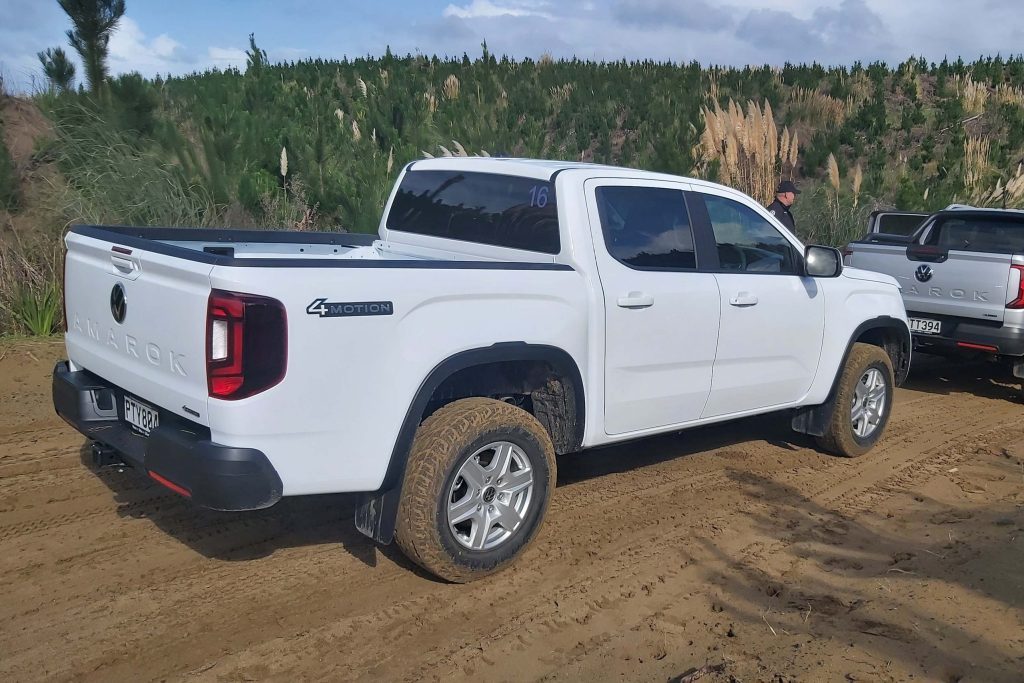
While it’s an entry level model, it’s not a stripper. “It’s a base mode by default,” says Kevin Richards, head of VW Commercial in NZ. “Yes, it’s the entry level model but we’ve put the big screen and digital cockpit on the spec list, it still feels premium with all the tech in there.” And it’s well sorted on the safety front too, the range gaining a five star ANCAP rating on the back of its long list of active safety features as standard. There are a load more assistance systems (including the auto reverse braking, semi-annoying when it stops you from backing in long grass…) adaptive cruise, smarter AEB and collision avoidance systems and speed sign recognition. This model is the only one missing a tray liner, side steps and the style bars adorning the others as it’s the most likely candidate to be put to (real) work and fitted with job-specific accessories. One you won’t have to fit is a tow bar, as these are now standard, fitted at the factory (which is now in South Africa).
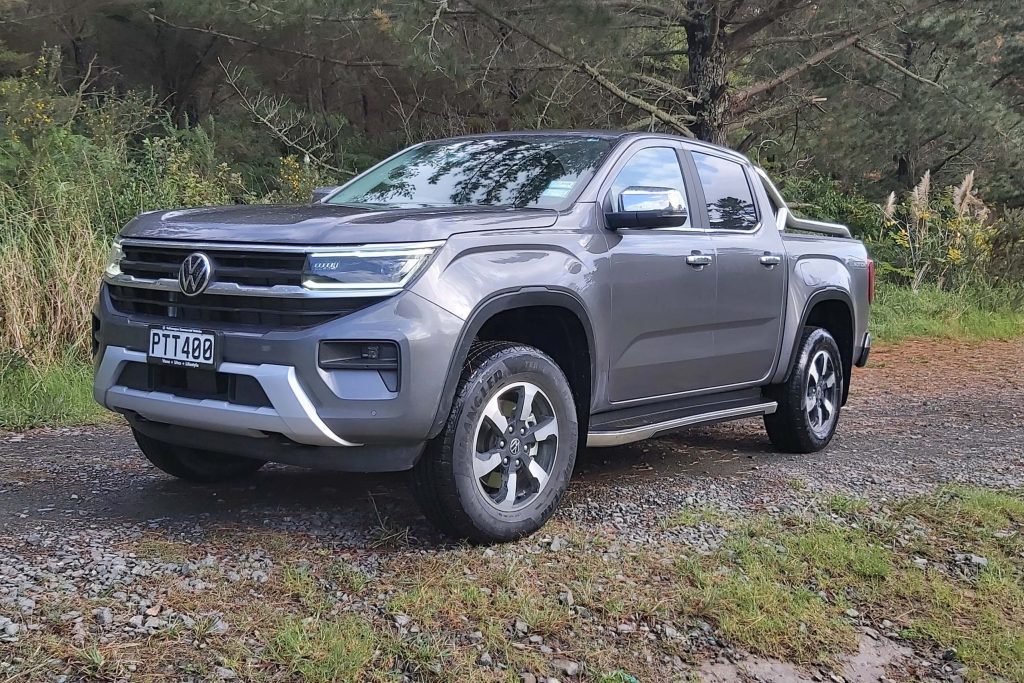
Next up is the Style at $75,000 which adds a bi-turbo 2.0-litre with 154kW and 500Nm and gets a ten-speed auto. Its vitals are 8.3L/100km and 218g/km for a fee of $1840 (and rising to $3910 from July 1). Both the four-cylinder models have the traditional part-time 4×4 set-up with a 2H, 4H and 4L setting, while the V6 models get a 4A auto setting, the centre diff shuffling torque toward the front wheels when traction is required (ranging from 0:100 to 50:50). That’s good for towing (all Amaroks rated to 3500kg braked with a downball load of 350kg) and it’s handy when the V6 models spit out 600Nm of torque so readily.
But Richards sees the Style model as an opportunity to help grow Amarok sales. “We’ve been heavily biassed toward the V6 for the last few years but this bi-turbo gives us a real opportunity to get to where the majority of the market sits.
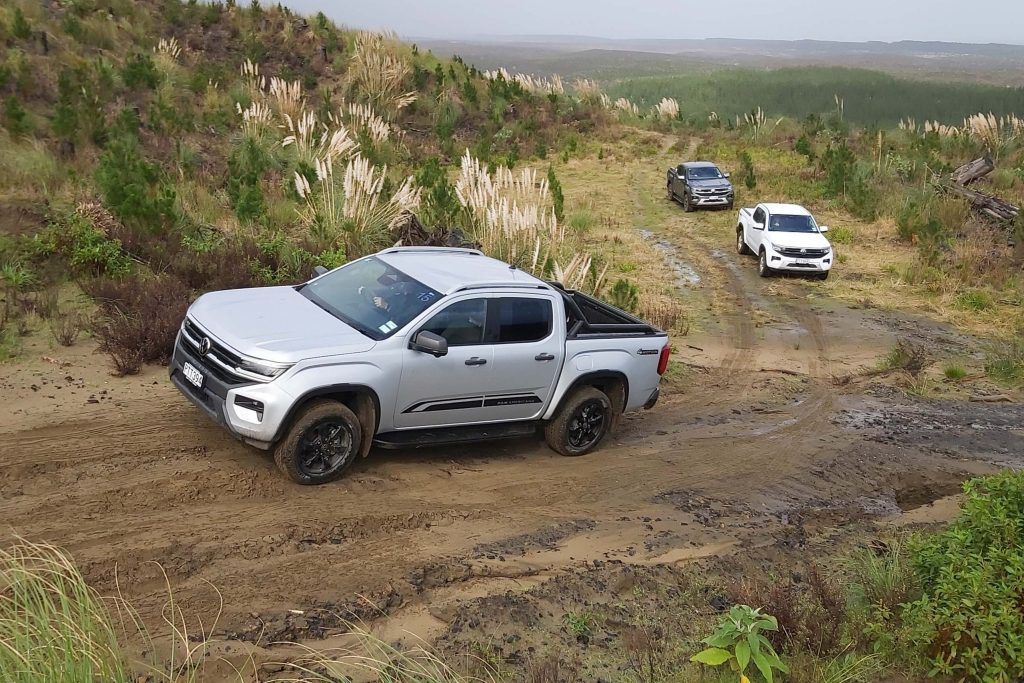
“There could potentially be a switch toward the four cylinder as CCD fee increases; it’s incredibly capable and I think people will discover that when they drive it. The better fuel economy and the smaller fee could make a difference.”
You sure can, the Amarok has done well thanks to its big V6 engine, and there are two range toppers for the line-up, one with an off road bent, the $88,000 PanAmericana with its 18-inch alloys and all terrain tyres, and the $90,000 Aventura, rolling on 20-inch alloys and road oriented rubber. Both have the 184kW/600Nm V6, the 10-speed auto and the selectable four-wheel drive with a couple of additional drive modes for off road use. It has a $3190 fee at present (9.6L/100km, 254g/km) but will move to $5980.
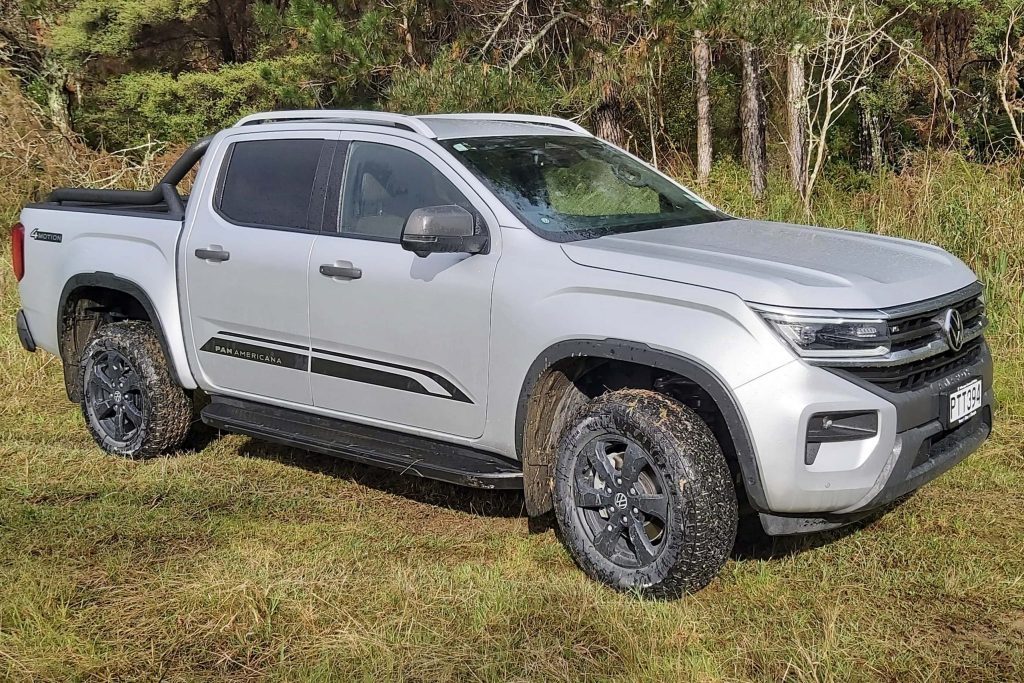
Some other highlights of the new Amarok include a wading depth of 800mm (helping Aucklanders justify driving a ute in the city when those one in a hundred floods happen every other month), and slightly improved approach and departure angles. Compared with the old model, it’s 100mm longer, with 170mm increase in wheelbase. Some of that benefits rear passengers who get 45mm extra leg room, and a much comfy seat (less upright) and a bigger window. The tray is still a decent size, measuring 1227mm between the arches and 1624mm long.
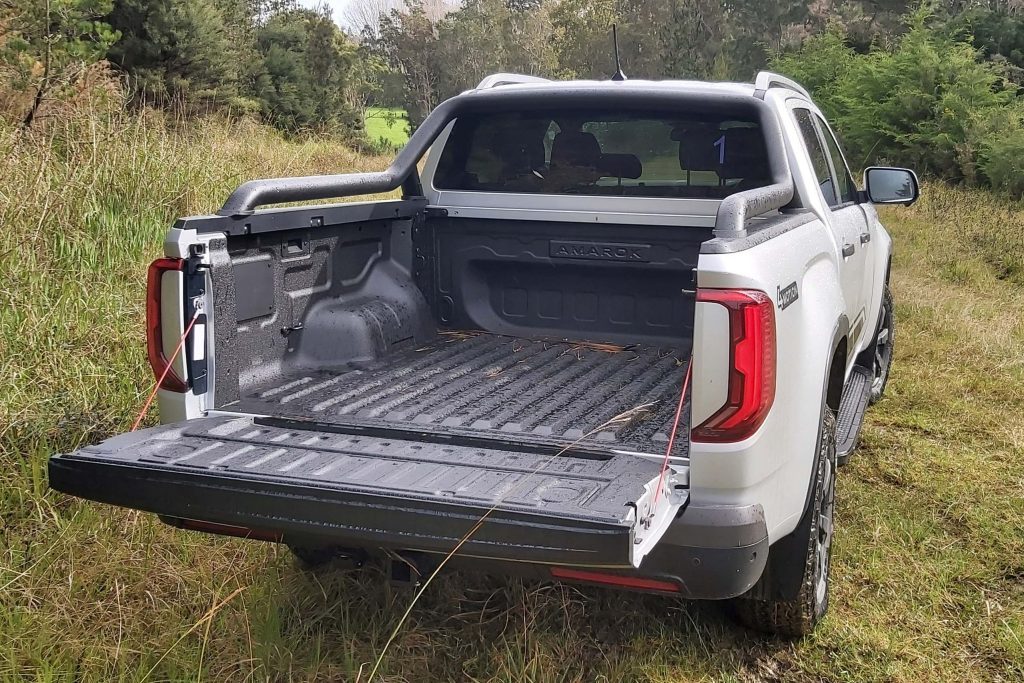
While Amarok has never cracked 1000 annual sales here, Richards believes the new one will next year. And supply is better than it has been previously too.
We took it off road through the Woodhill Forest, it tackling all the obstacles easily. Noteworthy points are its smooth rough road ride, and well tuned traction control, especially the hill descent function. The V6 is a model of smoothness, the transmission with minimal shift shock in the low range, and the big engine delivering more grunt with fewer revs. Refinement is the key attribute of the V6 models.
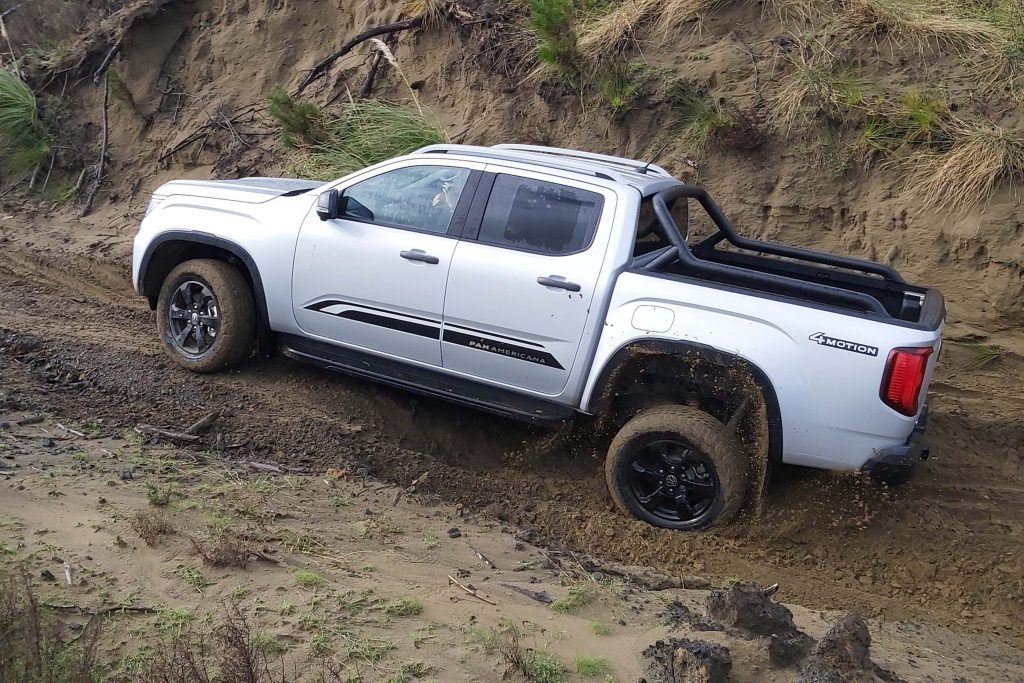
The Style, with its bi-turbo still does a great job, though you note more engine noise and vibrations. On road, the PanAmericana has a cultured ride quality as the V6 models have a ‘Comfort Suspension’ tune. That’s not to the detriment of payload however, the PanAmericana quoted at 967kg, the best of the range. The ‘smaller’ 18s and all terrain rubber probably help with that ride yet it grips okay on wet roads, while the auto setting for the 4×4 system ensures the grunt is grounded. Moving behind the wheel of the Style, you note more road bumps, but the bi-turbo does a good job, it’s not completely outclassed by the V6, though the trans works a bit harder. The cabin is quality too, though not quite as nice as the PanAmericana with its extended leather trim.
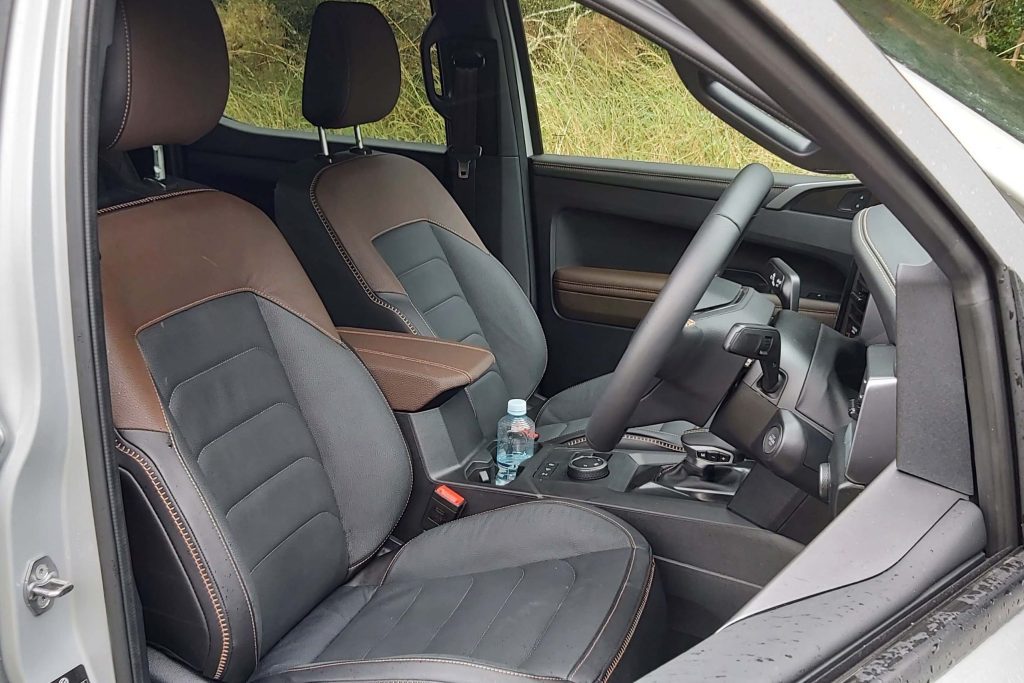
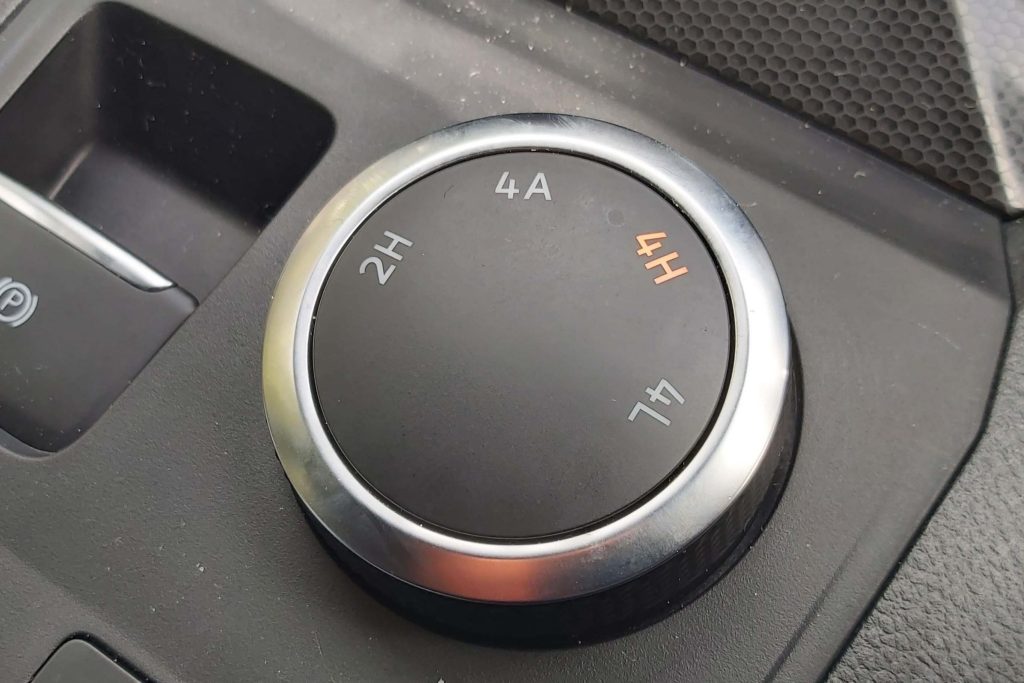
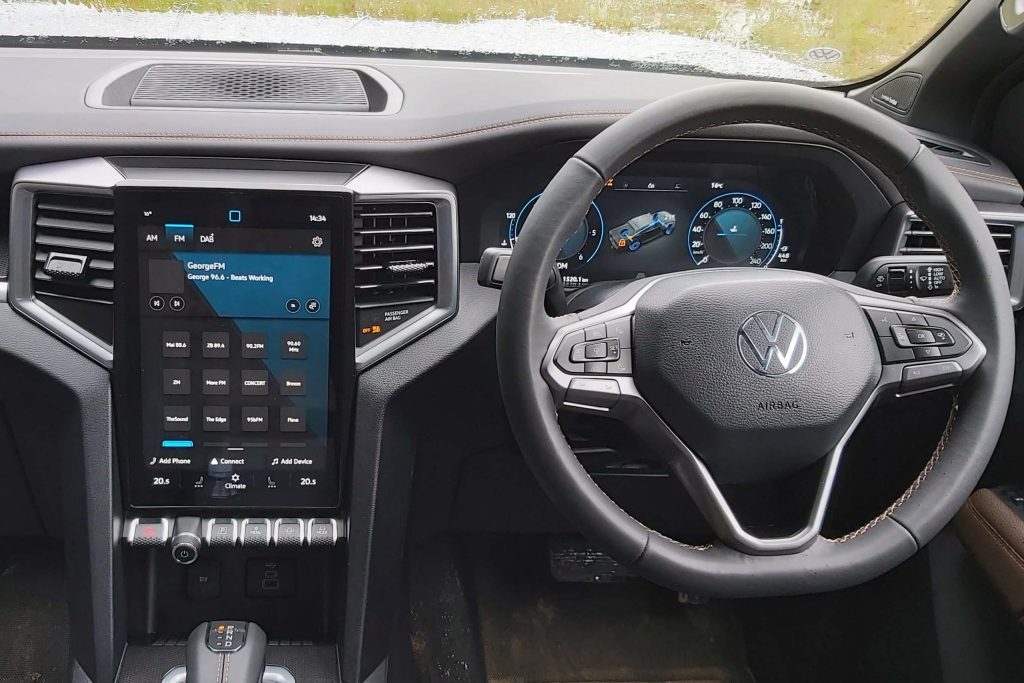
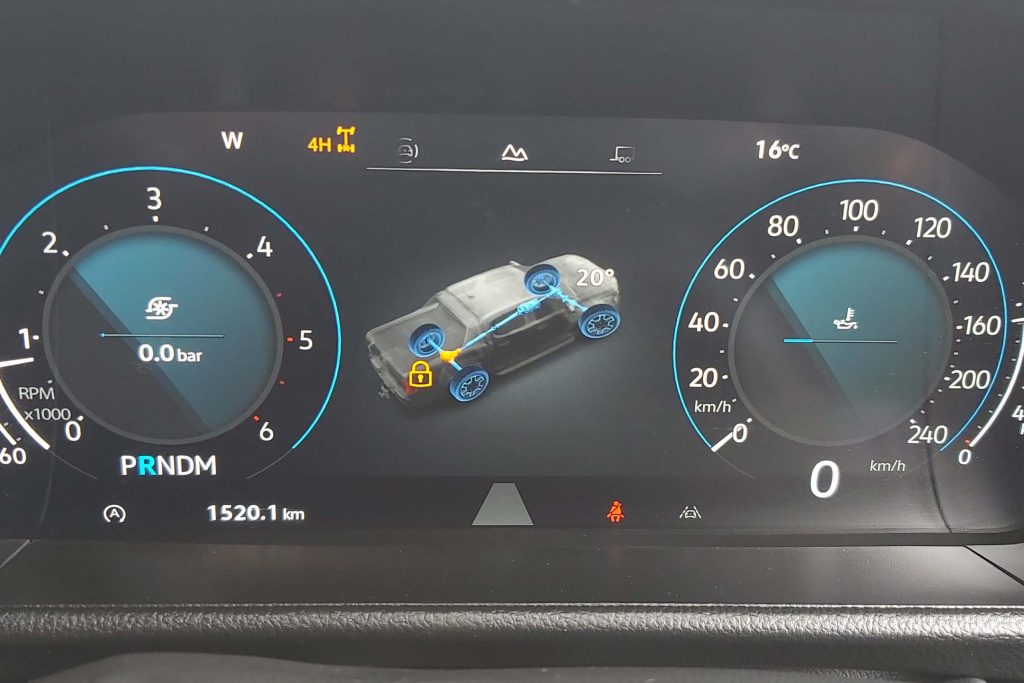
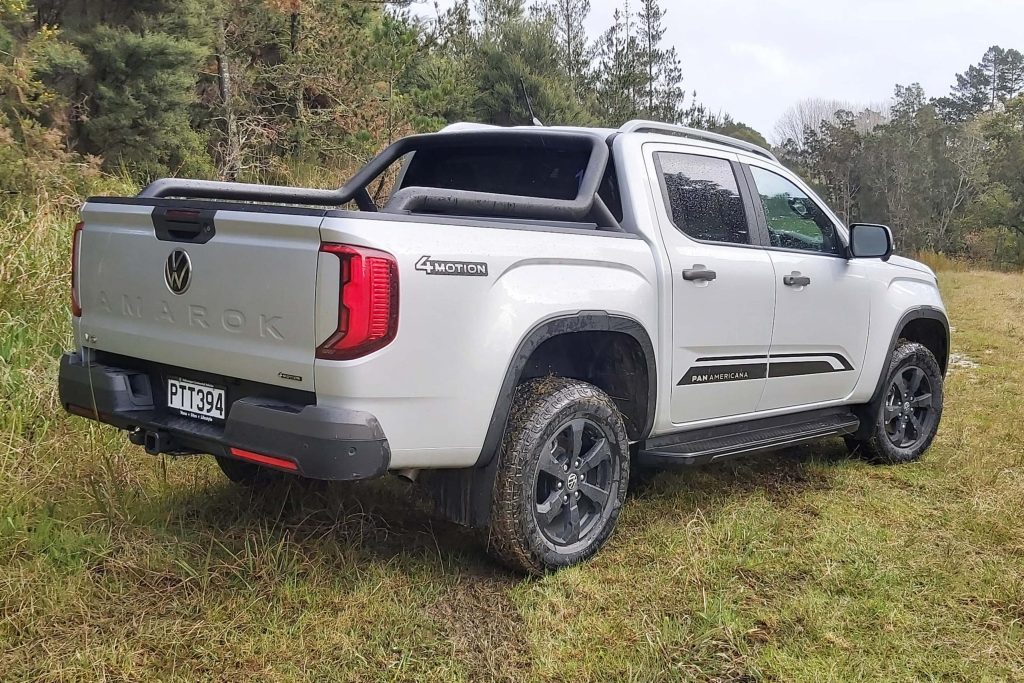
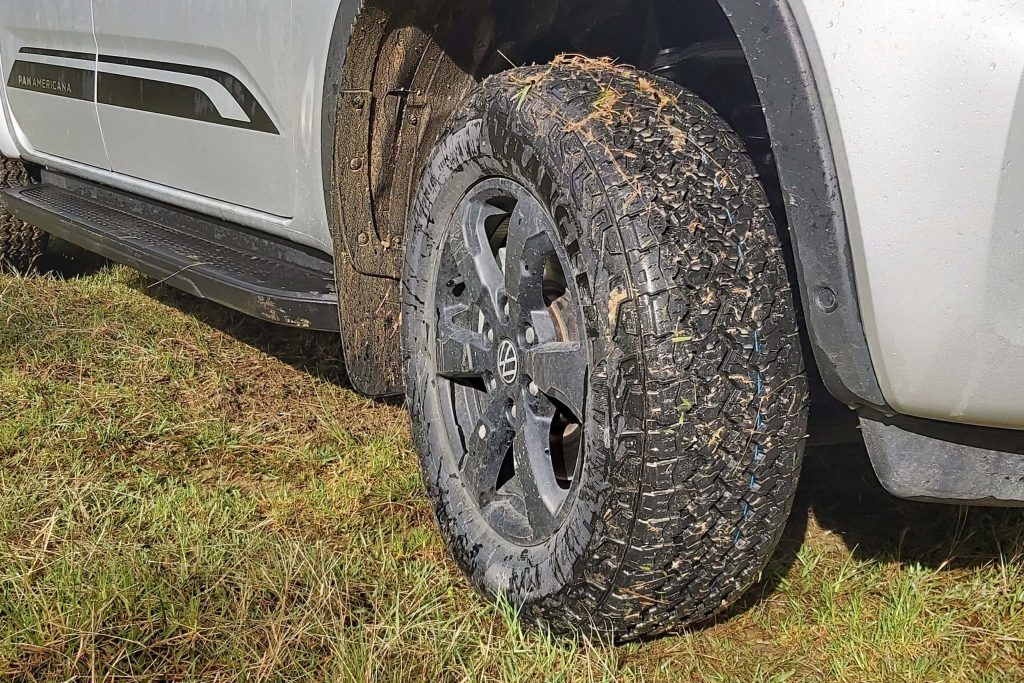
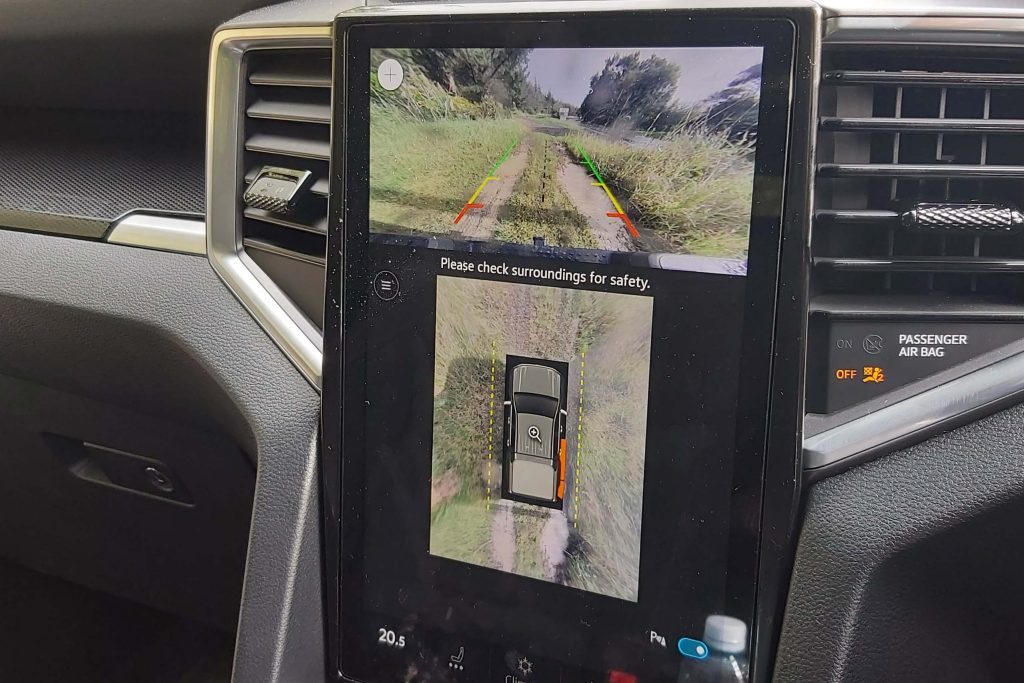
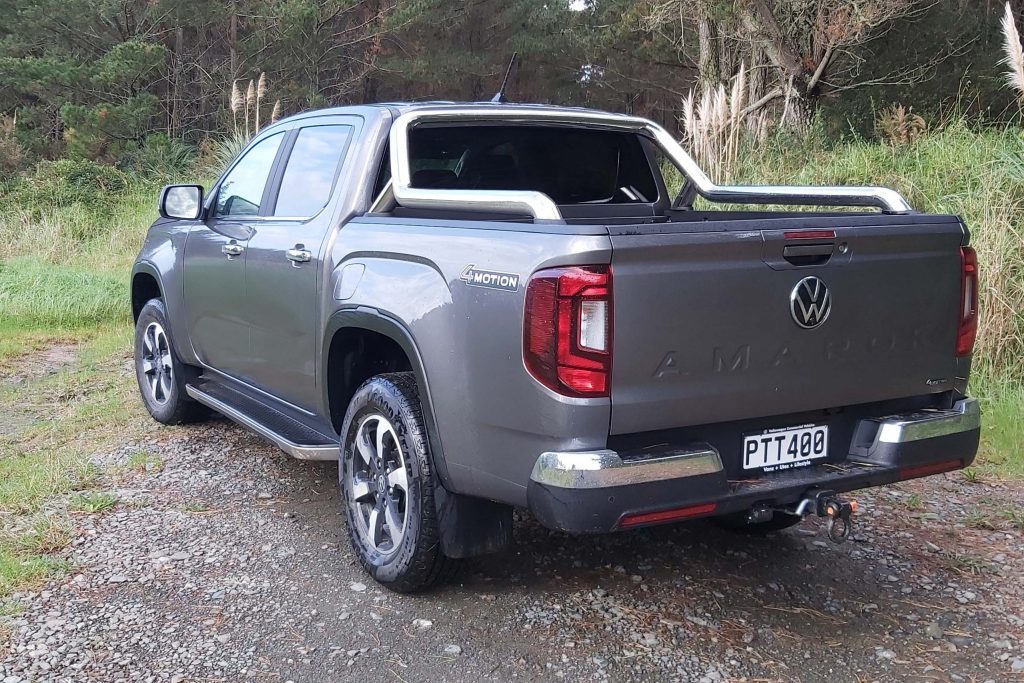
While certainly pricey, there’s also no lack of buyers for top spec utes, so Amarok should do well then, a rig for the ‘discerning’.


